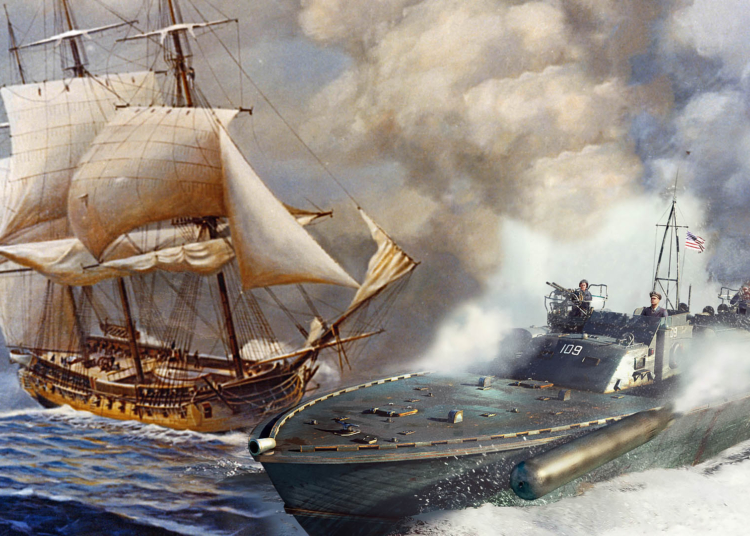Naval battles have played a significant role throughout history, shaping the course of human civilization. This article explores the evolution of naval tactics from ancient times to the modern era. It examines key battles such as the Battle of Salamis in ancient Greece, the Battle of Lepanto during the medieval and Renaissance periods, the Battle of Trafalgar in the age of sail, the Battle of Hampton Roads during the transition to modern warfare, and the Battle of Midway in the modern era. The article highlights the strategic and technological advancements that have influenced naval warfare over time and emphasizes the importance of understanding naval tactics for historical context and future conflicts.
Battles at Sea: Understanding the Evolution of Naval Tactics
Introduction
Naval battles have played a crucial role in shaping the history of mankind. From ancient times to the modern era, many nations have engaged in fierce naval warfare, leading to significant developments in naval tactics. Understanding the evolution of naval tactics is not only crucial for historical context but also for appreciating the strategic and technological advancements that have shaped the way battles are fought at sea. This article aims to explore the major stages in the evolution of naval tactics, highlighting significant battles and their impact.
Ancient Naval Tactics
Naval warfare in ancient times primarily revolved around the use of rowed ships, such as the triremes and quinqueremes. The naval battles, like the Battle of Salamis (480 BCE) between the Greeks and Persians, focused on ramming and boarding enemy vessels. Success in these battles relied heavily on ship maneuverability and crew combat abilities. The advancements in naval tactics during this period included the development of naval formations, such as the famous Greek “diekplous” formation, which aimed to break the enemy’s line and maximize ramming opportunities.
Medieval and Renaissance Tactics
During the medieval and Renaissance periods, naval warfare became more complex due to the emergence of cannons and gunpowder. Battles, such as the Battle of Lepanto (1571) between the Holy League and the Ottoman Empire, marked a transition from primarily ramming tactics to a combination of gunnery and boarding. The use of powerful cannons allowed ships to engage in long-distance combat, changing the dynamics of naval battles. New tactics, such as the “crescent formation” used by the Holy League, aimed to concentrate firepower and break the enemy’s naval formation.
The Age of Sail
The Age of Sail witnessed significant advancements in shipbuilding and tactics, epitomized by the naval battles during the age of colonialism. Battles like the Battle of Trafalgar (1805) between the British and the combined French-Spanish fleet showcased the importance of maneuverability and broadside firepower. The introduction of ships-of-the-line, heavily armed and capable of sailing in formation, led to the development of tactics like the “line of battle” strategy. This approach involved forming a single or double line of ships to maximize firepower on the enemy while exploiting weak points in their formation.
The Transition to Modern Warfare
The advent of steam-powered ships and the introduction of ironclads during the mid-19th century revolutionized naval warfare. Battles like the Battle of Hampton Roads (1862) between the USS Monitor and the CSS Virginia marked the shift from wooden ships to armored vessels. The increased range and accuracy of naval artillery made traditional formations obsolete. Naval tactics adopted during this period focused on long-range engagements, utilizing steam power for speed and maneuverability. The development of torpedoes and submarines introduced new elements of surprise and stealth to naval warfare.
The Modern Era
The modern era of naval warfare is characterized by rapid technological advancements and the focus on airpower. Battles like the Battle of Midway (1942) during World War II demonstrated the significance of aircraft carriers and the ability to project air superiority over the sea. Naval tactics in this period involved carrier-based air strikes, anti-submarine warfare, and the development of missile technology. The evolution of naval tactics continues to this day, with modern navies incorporating advanced technologies like unmanned aerial vehicles (UAVs) and electronic warfare systems into their strategies.
Conclusion
The evolution of naval tactics throughout history has been a fascinating journey. From the ancient world to the modern era, battles at sea have constantly pushed the boundaries of strategic thinking and technological innovation. Understanding the evolution of naval tactics allows us to appreciate the sacrifices and achievements of past naval forces while recognizing the continuous need for adaptation in future conflicts. As technology continues to advance, naval tactics will undoubtedly undergo further transformations, shaping the outcomes of battles at sea for years to come.












